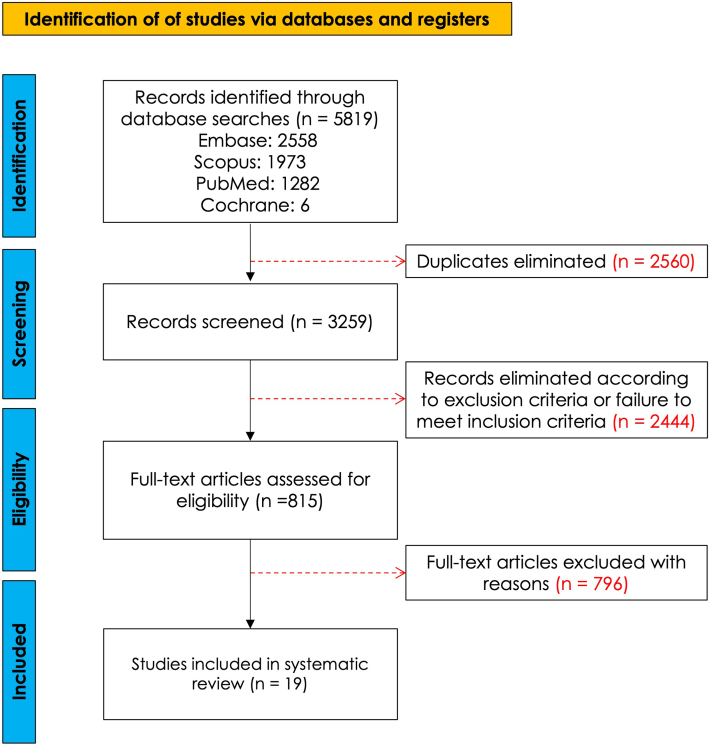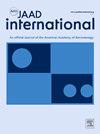FDA and EMA-approved noninvasive imaging techniques for basal cell carcinoma subtyping: A systematic review
IF 5.2
引用次数: 0
Abstract
Background
Basal cell carcinoma (BCC), the most common skin cancer, requires accurate subtyping for optimal treatment. While histopathology is the gold standard, noninvasive imaging offers a biopsy-free alternative, though its accuracy remains unclear.
Objective
To assess the diagnostic accuracy of Food and Drug Administration- and European Medicines Agency-approved noninvasive imaging techniques for BCC subtyping.
Methods
A systematic review included 19 studies (2650 lesions) from EMBASE, Scopus, PubMed, and Cochrane Library (published up to November 30, 2024). Evaluated modalities included dermoscopy, high-frequency ultrasound (HFUS), dermoscopy-guided HFUS (DG-HFUS), optical coherence tomography (OCT), high-definition OCT (HD-OCT), dynamic OCT (D-OCT), line-field confocal OCT (LC-OCT), and reflectance confocal microscopy.
Results
Dermoscopy showed moderate accuracy (81.9% sensitivity, 81.8% specificity for superficial BCC [sBCC]). DG-HFUS outperformed HFUS (82.4% sensitivity, 91.3% specificity). LC-OCT had the highest accuracy, achieving 100% sensitivity for infiltrative BCC. D-OCT distinguished subtypes at 150 μm depth; branching vessels at 300 μm increased nBCC risk (relative risk = 1.53, P = .016). HD-OCT had 100% sensitivity for sBCC but lower accuracy for other subtypes. Reflectance confocal microscopy had 88.9% sensitivity for non-sBCC but only 33.3% for aggressive subtypes.
Limitations
Study heterogeneity and inconsistent protocols limit comparability.
Conclusion
LC-OCT and HD-OCT offer the highest accuracy, while DG-HFUS outperforms dermoscopy and HFUS, making them strong noninvasive alternatives.

FDA和ema批准的基底细胞癌亚型的无创成像技术:系统回顾。
背景:基底细胞癌(BCC)是最常见的皮肤癌,需要准确的亚型以获得最佳治疗。虽然组织病理学是金标准,但非侵入性成像提供了一种无活检的替代方法,尽管其准确性尚不清楚。目的:评估美国食品和药物管理局和欧洲药品管理局批准的无创成像技术诊断BCC亚型的准确性。方法:系统回顾了来自EMBASE、Scopus、PubMed和Cochrane图书馆(截止到2024年11月30日)的19项研究(2650例病变)。评估的方式包括皮肤镜、高频超声(HFUS)、皮肤镜引导下的高频超声(DG-HFUS)、光学相干断层扫描(OCT)、高清OCT (HD-OCT)、动态OCT (D-OCT)、线场共聚焦OCT (LC-OCT)和反射共聚焦显微镜。结果:皮肤镜检查对浅表BCC (sBCC)的准确性中等(敏感性81.9%,特异性81.8%)。DG-HFUS优于HFUS(敏感性82.4%,特异性91.3%)。LC-OCT的准确性最高,对浸润性BCC的灵敏度达到100%。D-OCT在150 μm深度处区分出不同亚型;300 μm分支血管增加nBCC风险(相对风险= 1.53,P = 0.016)。HD-OCT对sBCC的敏感性为100%,但对其他亚型的准确性较低。反射共聚焦显微镜对非sbcc的敏感性为88.9%,但对侵袭性亚型的敏感性仅为33.3%。局限性:研究的异质性和不一致的方案限制了可比性。结论:LC-OCT和HD-OCT具有最高的准确性,而DG-HFUS优于皮肤镜和HFUS,是一种强大的无创替代方法。
本文章由计算机程序翻译,如有差异,请以英文原文为准。
求助全文
约1分钟内获得全文
求助全文

 求助内容:
求助内容: 应助结果提醒方式:
应助结果提醒方式:


